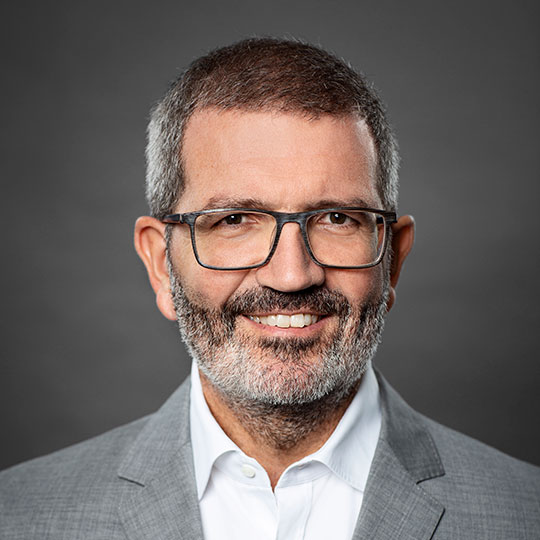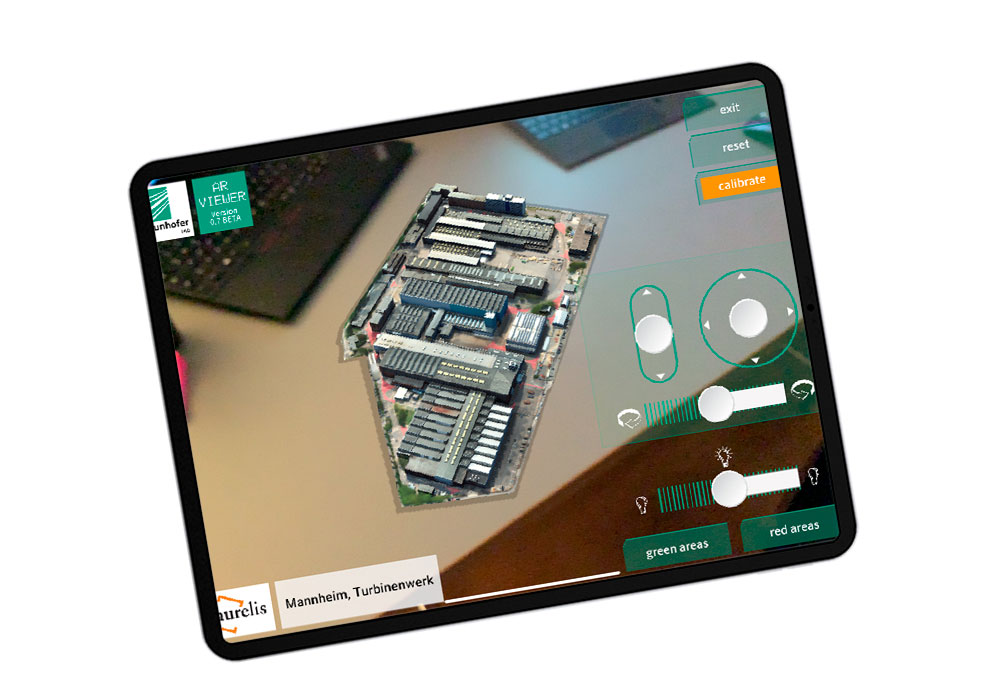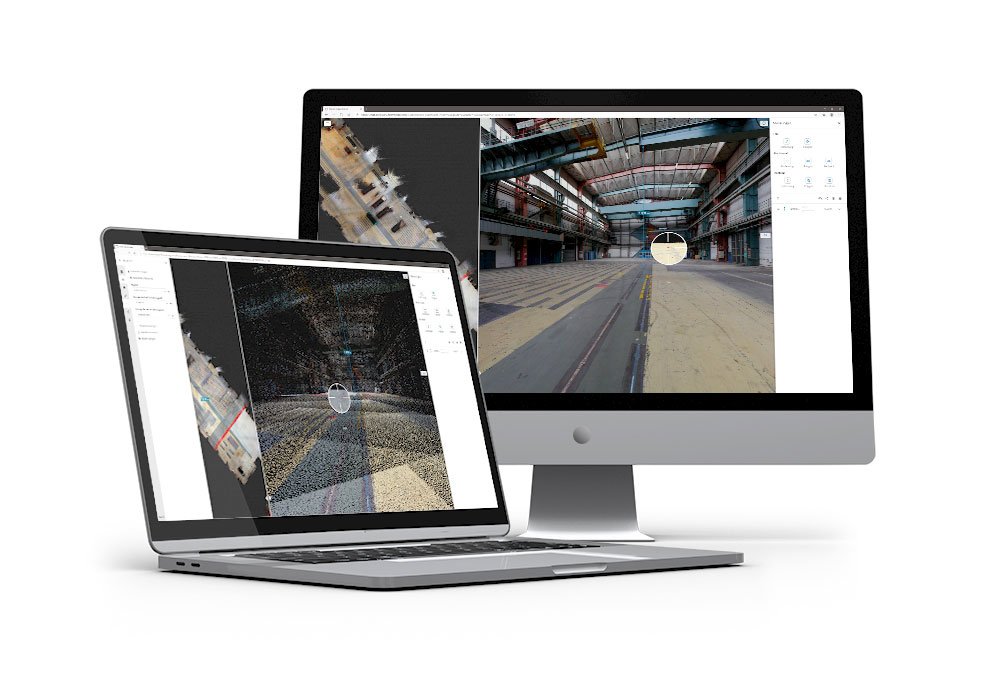
Factory of the future
Digital inventory management for existing buildings and digital building/site modeling at a former turbine plant in Mannheim

A modern commercial quarter is in the works for the site of an old turbine factory in Mannheim. Fraunhofer IAO is helping to develop a digital twin that will enable an integrated digital view of the site both during the initial planning phase and when the quarter is up and running.
The challenge
The turbine plant in Mannheim-Käfertal lies dormant, like a sleeping giant. The almost 18-hectare site in the northeast of the city is occupied by vast shop floor and office buildings. The total building area is currently around 100,000 square meters. Generators and turbines had been manufactured here for almost 120 years. However, most of the conveyor belts have been idle since 2018.
Aurelis Real Estate Service GmbH now wants to rejuvenate the area. This real estate firm based in Eschborn acquired the site in 2019. As part of the deal, they made a commitment to the local authorities that they would transform the site into a versatile commercial location. “The site will provide a home for small, medium and large companies in production, service and industry,” explains Prof. Elmar Schütz, head of development at Aurelis.
What characteristics will these new buildings need to have? And which of the existing buildings can be retained? The answers to these questions must take into account possible future development plans. “In the future, companies will need to be able to adapt flexibly to changing market requirements at all times,” says Schütz. This means that buildings must be able to adapt to these requirements too. “As business models change, it's likely that space requirements will change also,” Schütz adds. Sustainable planning takes this into account.
The task
Aurelis wanted to build a state-of-the art commercial park on the grounds of the Mannheim turbine plant. The first step they took was to approach Fraunhofer IAO with a complex challenge. “Firstly, we were looking for a way to make the planning phase as transparent as possible. We also wanted to create a digital framework for managing commercial complexes that can adapt continuously to the needs of the future.”
Large shop-floor buildings will stand alongside bright coworking spaces for small start-ups, heavy-duty cranes alongside bicycle stands, and storage warehouses alongside e-charging stations: The demands of future users are diverse. “That’s why communication is central to a project like this,” says Schütz.
The solution
The technical platform that Aurelis has been developing with Fraunhofer IAO since 2019 is a digital replica of the turbine plant in the digital world – a digital twin. It collates all the relevant technical data for the site and its buildings, so that it is available to planners at all times. It also ensures that this data is visible. The digital twin is used to create 3D models of the site in order to facilitate exchange between the various stakeholders.
With the indoor viewer feature, for example, it is possible to take virtual tours of the site from a desktop computer. “It's about much more than just a pleasant stroll,” explains Günter Wenzel, head of Building Culture Innovation at Fraunhofer IAO. Since we all have concurrent access to the relevant technical data, we can, for example, readily figure out which idea is feasible and which is not. Another digital model shows a bird's eye view of the site and can display planned changes over time. “By providing a visual representation of the plans that everyone can access, the digital twin enables effective communication between everyone involved,” says Wenzel.
Later, when the commercial complex is up and running, this comprehensive database will come into play again: “It facilitates all processes related to the administration and maintenance of the site and, if necessary, to the redesign of buildings. The digital twin provides the foundation for transparent planning and the seamless exchange of data,” Wenzel explains.
What we're trying to do here is groundbreaking.

“Sustainable urban development means keeping in mind today how things could change tomorrow. Because ultimately, towns and cities must be flexible in order to contend with social and economic disruption. The same applies to buildings. The commercial complex of tomorrow can be redesigned as needed to meet changing usage requirements. This is the concept we want to implement on the site of the Mannheim turbine plant. The site's digital twin — a comprehensive digital representation of the entire commercial complex — will be an important tool in helping us achieve this. It will enable us to plan far into the future and comprehensively communicate with all stakeholders involved. Later, once the site is up and running, it will facilitate administration and maintenance because it collates all the data in one place. There is no doubt that digital twins will feature in every complex building project of the future. But for now, what we are attempting to do here in Mannheim is groundbreaking. Alongside Fraunhofer IAO, we are applying the latest technology to real-world situations.
Immersive engineering lab: immerse yourself in virtual worlds
Want to immerse yourself in virtual worlds, experience and interact with 3D, life-size engineering prototypes and make decisions as a group? You can do this at the Immersive Engineering Lab run by Fraunhofer IAO in Stuttgart. The only thing standing between reality and virtual reality is shutter glasses with in-built movement tracking.

